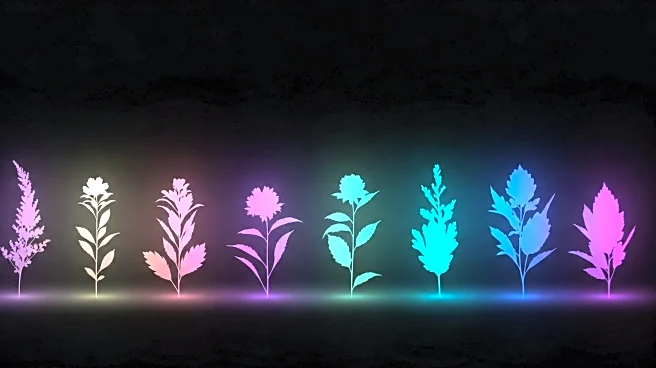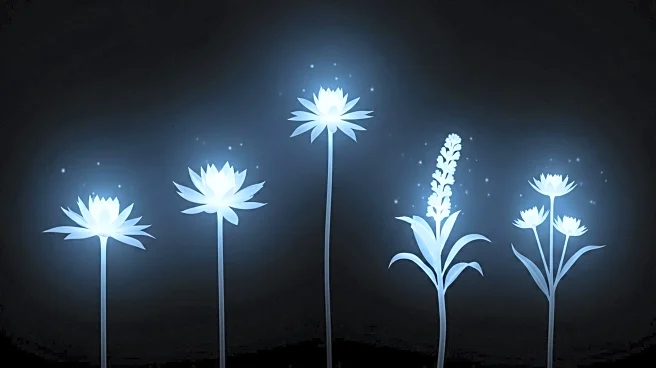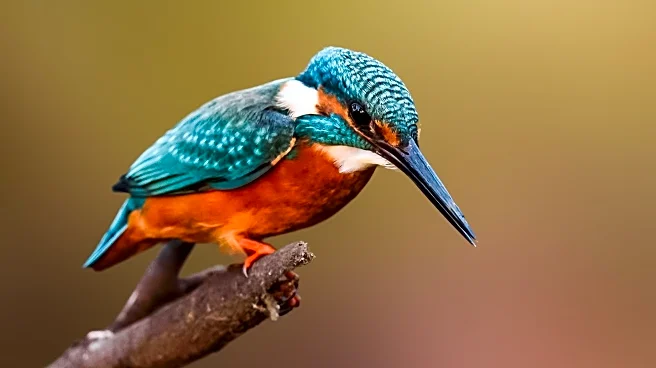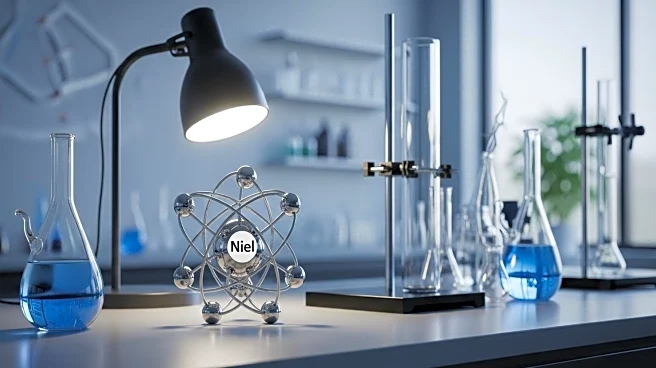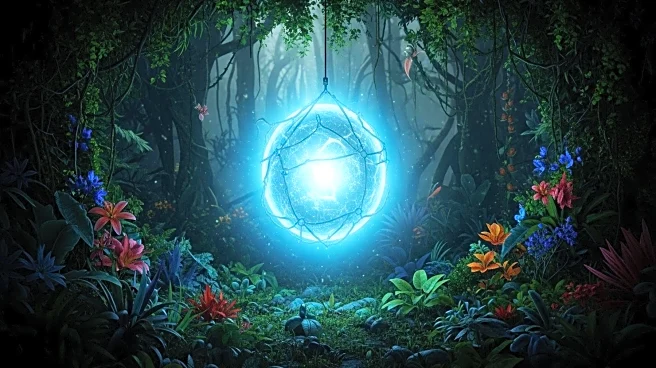What's Happening?
A team of Chinese researchers has developed multicolored glow-in-the-dark succulent plants, marking a significant advancement in plant luminescence technology. The researchers, led by biologist Shuting Liu from South China Agricultural University, injected the leaves of Echeveria 'Mebina' plants with strontium aluminate, a material commonly used in glow-in-the-dark toys. This method allows the plants to emit red, blue, and green light, expanding beyond the traditional green glow achieved through gene-editing techniques. The study, published in the journal Matter, demonstrates the potential for these plants to serve as sustainable lighting systems by harvesting sunlight during the day and emitting light at night. Despite the promising results, the luminescence intensity remains too weak for practical lighting applications, and safety assessments are ongoing.
Why It's Important?
The development of luminescent plants could revolutionize sustainable lighting solutions, offering an eco-friendly alternative to traditional streetlights. By utilizing sunlight to recharge and emit light, these plants could reduce energy consumption and carbon emissions associated with artificial lighting. However, the current technology is not yet viable for widespread use, as the brightness is insufficient for functional illumination. The research highlights the potential for integrating plant-based lighting into urban planning and public spaces, but further advancements are needed to enhance brightness and ensure safety. If successful, this innovation could benefit environmental conservation efforts and contribute to the development of green cities.
What's Next?
The researchers aim to improve the brightness and duration of luminescence in these plants, with ongoing safety assessments for both plants and animals. Future developments could lead to practical applications in gardens and public spaces, providing soft illumination at night. The team is exploring ways to enhance the luminescence intensity and extend the afterglow duration, which could pave the way for broader adoption of plant-based lighting systems. As the technology progresses, stakeholders in urban planning and environmental conservation may consider integrating these luminescent plants into sustainable infrastructure projects.
Beyond the Headlines
The ethical and environmental implications of using luminescent plants for lighting are significant. This innovation challenges traditional notions of urban lighting and raises questions about the impact on ecosystems and biodiversity. The use of inorganic materials in plants also prompts discussions on the balance between technological advancement and natural preservation. As researchers continue to explore the potential of luminescent plants, considerations around ecological sustainability and ethical practices will be crucial in shaping the future of this technology.
